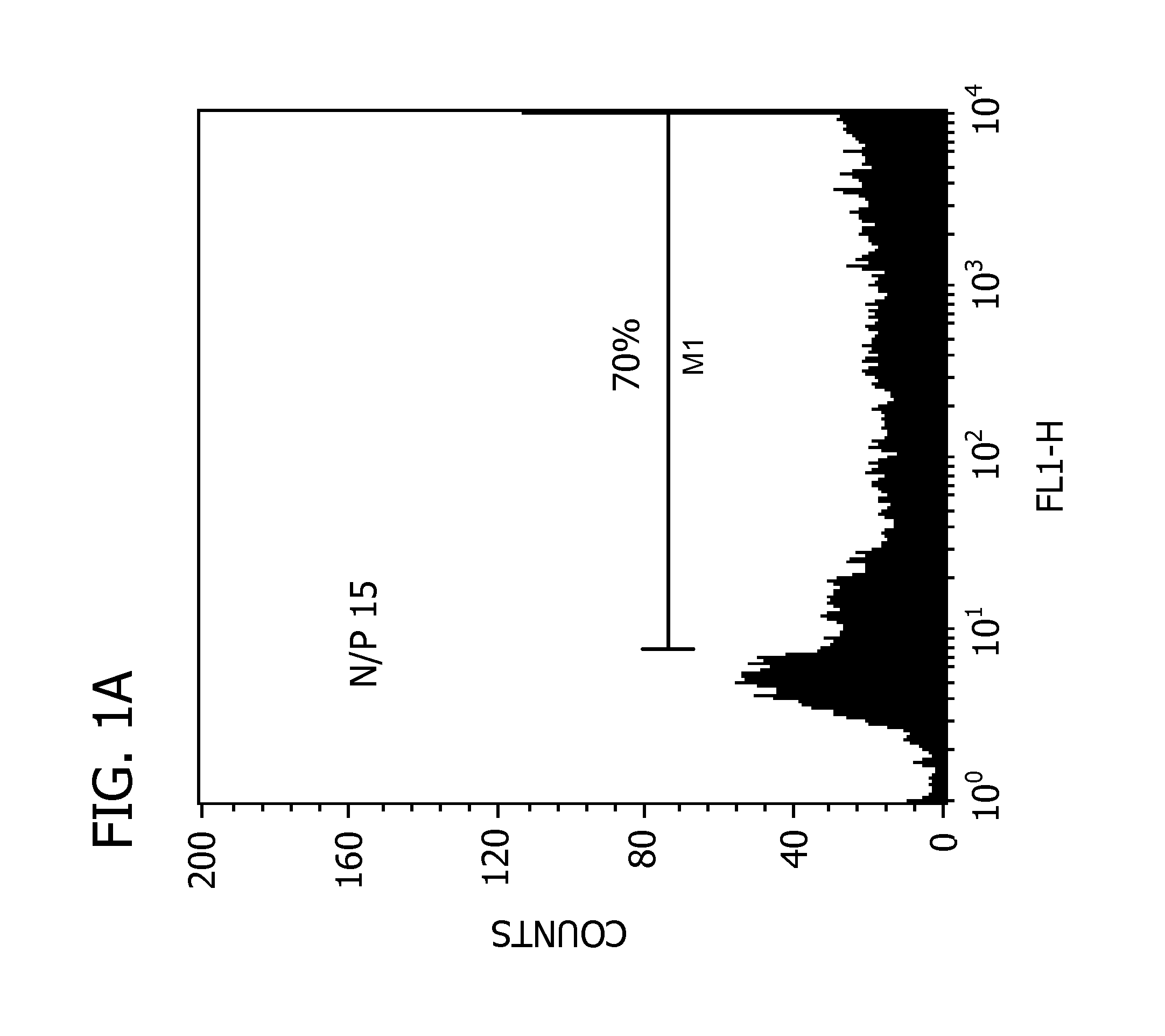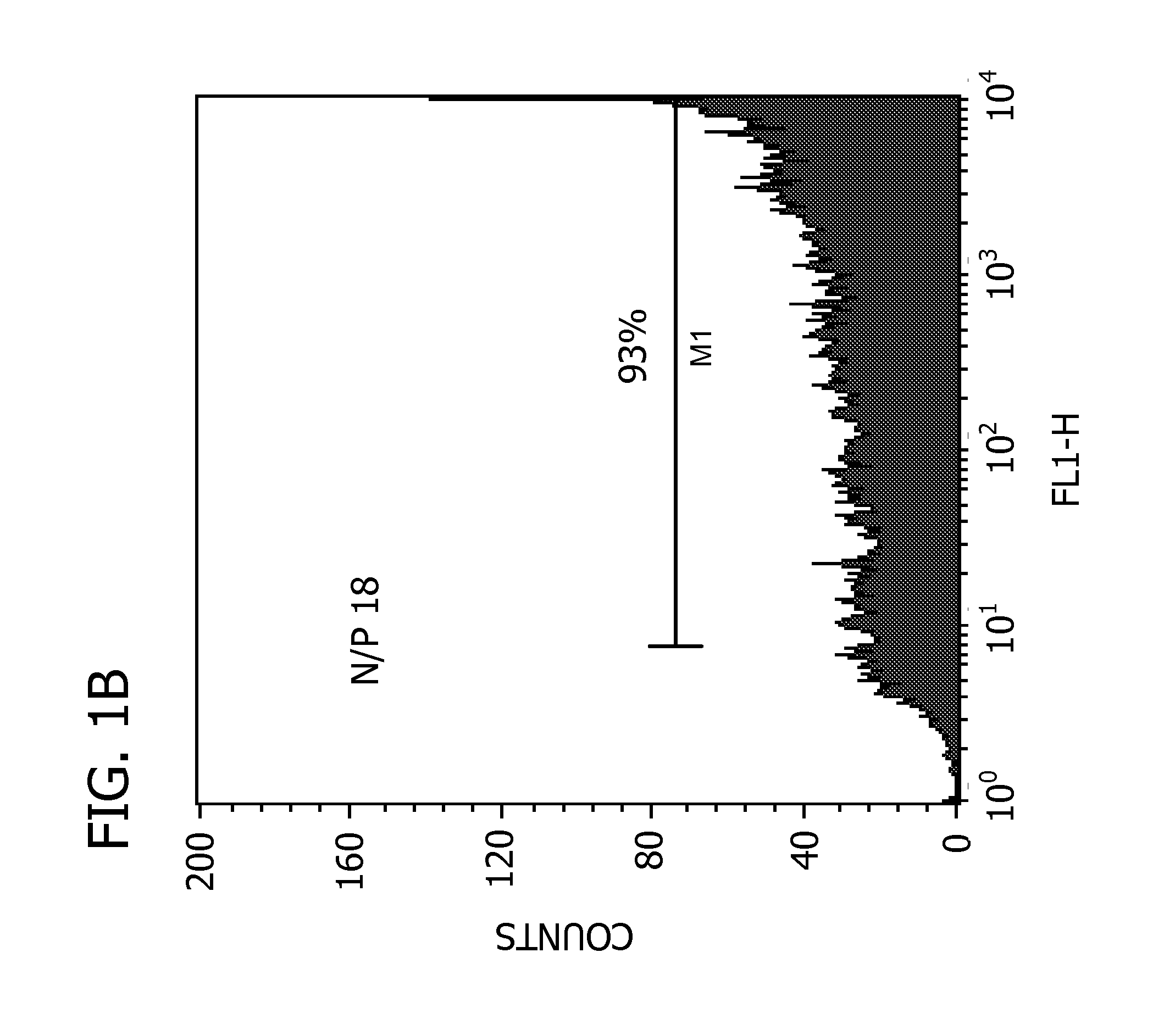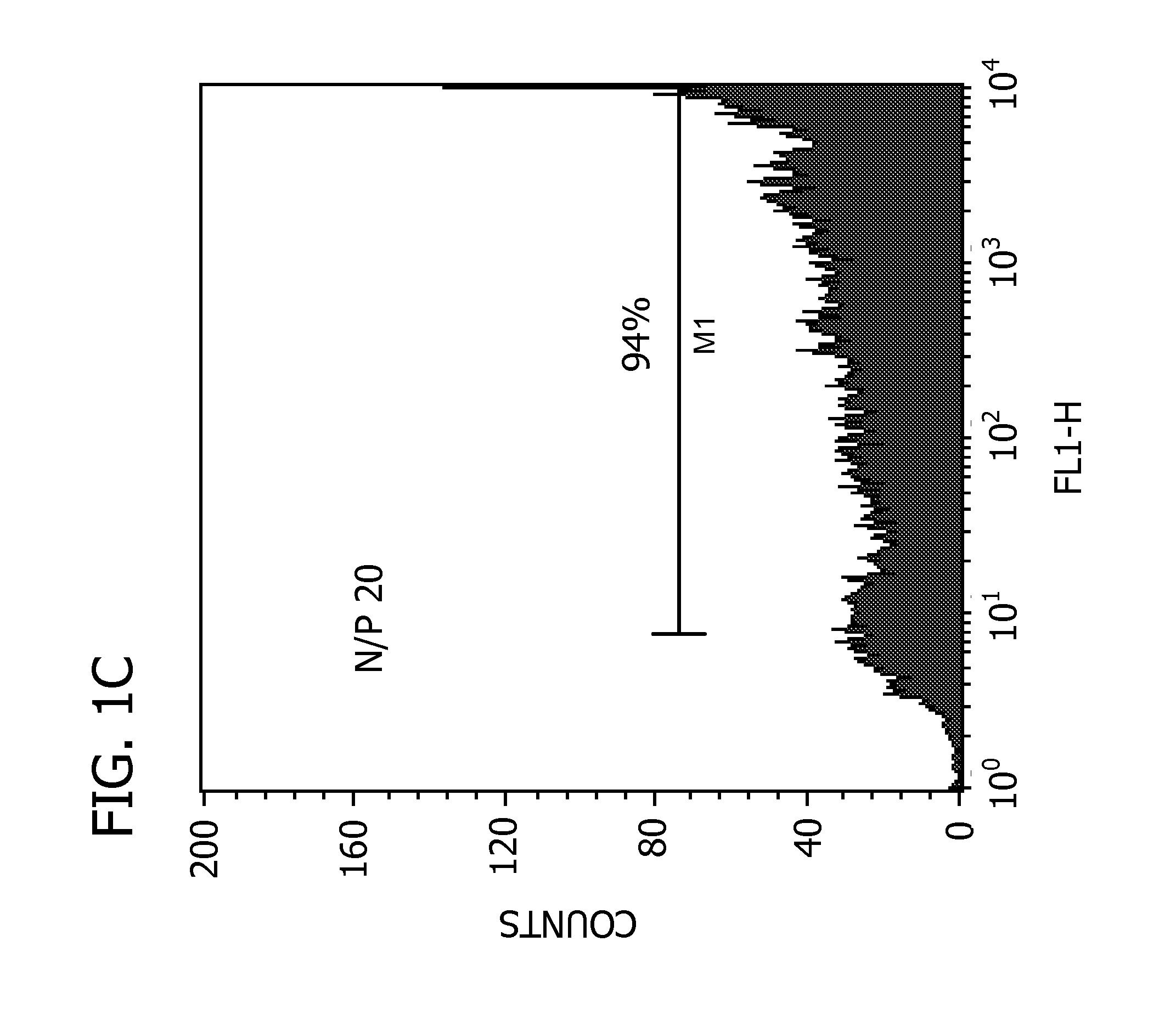Processes and compositions for transfecting Chinese hamster ovary (CHO) cells
a technology of chinese hamster ovary and composition, which is applied in the direction of biochemistry apparatus and processes, pharmaceutical delivery mechanisms, powder delivery, etc., can solve the problems of limited transfection efficiency, limited cho cell transfection efficiency, and lower amounts of recombinant polypeptide expressed and/or produced by cho cells, so as to achieve greater recombinant polypeptide production and high efficiency delivery of nucleic acids
- Summary
- Abstract
- Description
- Claims
- Application Information
AI Technical Summary
Benefits of technology
Problems solved by technology
Method used
Image
Examples
example 1
[0172]Under constant pH and incubation time, particle size is directly related to N / P ratio. Smaller N / P ratios result in larger average particle diameters where larger N / P ratios result in smaller average particle diameters. To determine the optimal particle size to transfect CHO-S cells, N / P ratios were varied and transfection efficiencies were determined by evaluating percent of GFP positive cells. CHO-S cells were effectively transfected as described above using a range of N / P ratios. See FIGS. 1A, 1B, 1C, 1D, 1E, and 1F. At high N / P ratios, some cytotoxity was observed. The optimal N / P ratio for CHO-S cells was observed to be 23:1. This N / P ratio gave the highest transfection efficiency (95%) and maintained cell viabilities greater than 90%. See FIG. 1D. With N / P ratios from 18:1 to 28:1, about 90% of the cells were transfected. See FIGS. 1B, 1C, 1D, and 1E. At lower N / P ratios of 15:1 or less, the percent of GFP positive cells decreased to 70% and less. See FIG. 1A. For all su...
example 2
[0173]Once an optimal N / P ratio was established, the effect of pH was analyzed. In an unbuffered system, i.e., when the particles are made in 150 mM NaCl (pH 5.8) versus the HEPES-buffered saline (150 mM NaCl) pH buffered at 7.3, the percent positive GFP expression decreased. As shown in FIG. 2A, forming the particles in a buffered system resulted in a 95% transfection efficiency, as compared to a 32% transfection efficiency in an unbuffered system (FIG. 2B).
example 3
[0174]In addition to particle size and distribution, growth characteristics of the CHO-S cells were optimized to achieve the highest transfection efficiencies. At optimal conditions, CHO-S cells grew exponentially with a doubling time of 5 to 10×105 cells / ml when seeded at 1.5×105 cells / ml. When cells were allowed to grow to higher densities before transfection, a decrease in transfection efficiency was seen. The cells were concentrated prior to transfection from different densities ranging from 4×105 cells / ml to 4×106 cells / ml of the aqueous medium to a final concentration of 2×106 cells / ml of the aqueous medium. As shown in FIGS. 3D and 3E, transfection efficiency decreases when the cells are transfected later in the growth phase (i.e., out of the early log phase of growth), as compared to FIGS. 3A, 3B, and 3C showing relatively high transfection efficiencies for cells transfected in the early log phase of growth.
PUM
| Property | Measurement | Unit |
|---|---|---|
| polydispersity | aaaaa | aaaaa |
| polydispersity | aaaaa | aaaaa |
| particle size | aaaaa | aaaaa |
Abstract
Description
Claims
Application Information
 Login to View More
Login to View More - R&D
- Intellectual Property
- Life Sciences
- Materials
- Tech Scout
- Unparalleled Data Quality
- Higher Quality Content
- 60% Fewer Hallucinations
Browse by: Latest US Patents, China's latest patents, Technical Efficacy Thesaurus, Application Domain, Technology Topic, Popular Technical Reports.
© 2025 PatSnap. All rights reserved.Legal|Privacy policy|Modern Slavery Act Transparency Statement|Sitemap|About US| Contact US: help@patsnap.com



